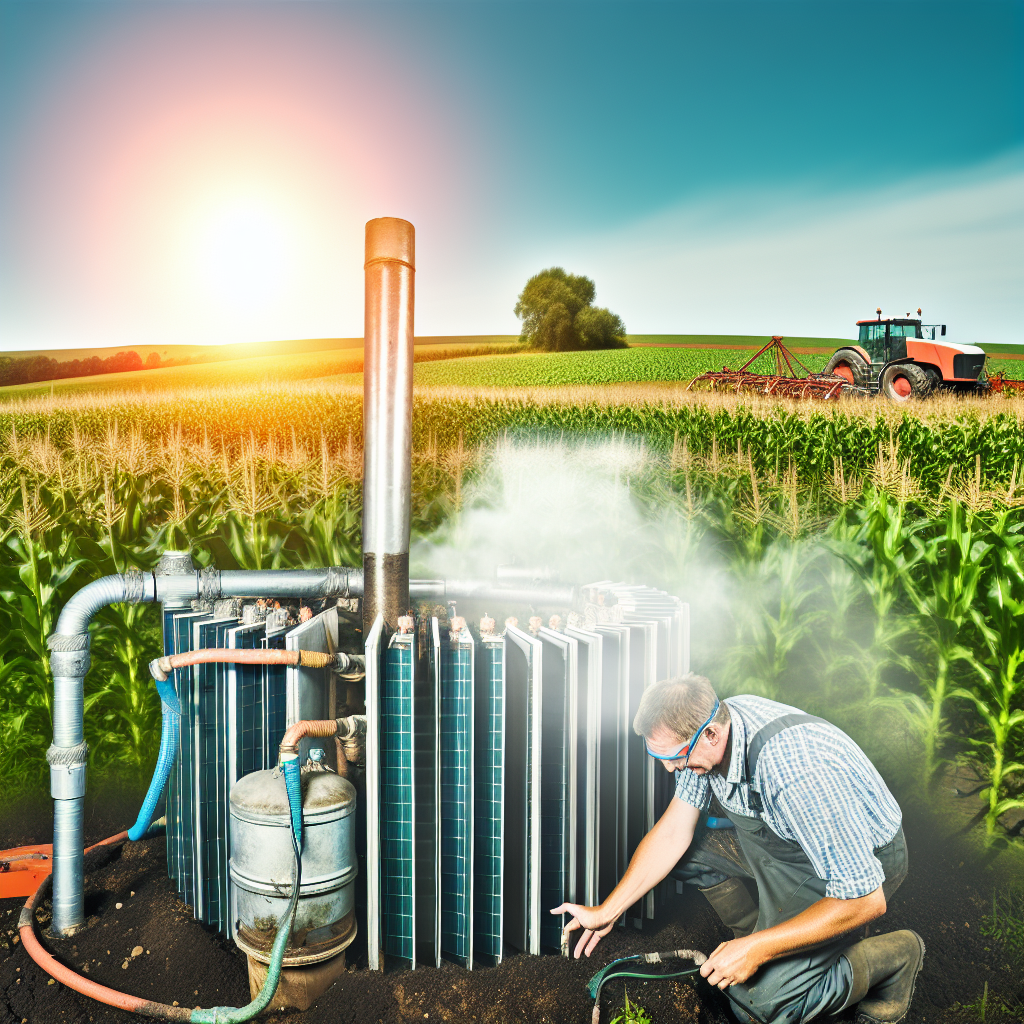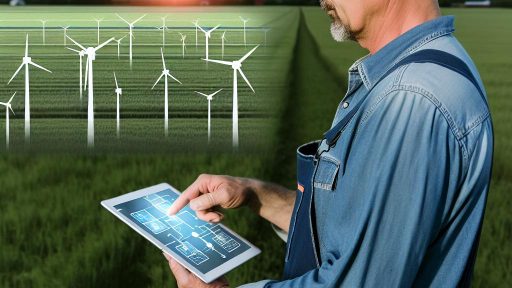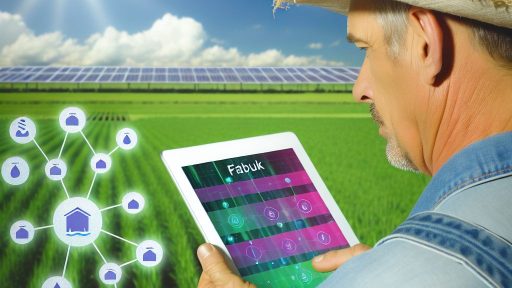Introduction to Geothermal Energy and Its Relevance to Farming
Geothermal energy harnesses heat from beneath the Earth’s surface.
This renewable energy source offers significant benefits for various sectors.
In recent years, farming has emerged as a key area of exploration for geothermal applications.
Farmers face challenges such as climate variability and energy costs.
Geothermal energy can effectively address these issues, leading to sustainable practices.
Understanding Geothermal Energy
Geothermal energy is derived from the natural heat stored in the Earth.
It exists in various forms, including steam and hot water.
This energy is harnessed through wells and geothermal plants.
Furthermore, geothermal resources are abundant and largely untapped.
This availability presents an excellent opportunity for innovative farming solutions.
Benefits of Geothermal Energy for Farms
Farm operations can significantly benefit from using geothermal energy.
Firstly, it provides a constant energy supply throughout the year.
This reliability reduces dependence on fossil fuels.
Moreover, geothermal energy can lower operational expenses.
As a result, farmers can allocate more resources towards sustainable practices.
Transform Your Agribusiness
Unlock your farm's potential with expert advice tailored to your needs. Get actionable steps that drive real results.
Get StartedApplications of Geothermal Energy in Agriculture
Various applications of geothermal energy exist for farming operations.
For instance, farmers can utilize it for greenhouse heating.
Additionally, geothermal energy can power irrigation systems efficiently.
Another application includes using heat for soil sterilization.
This process helps control pests and diseases in crops.
Geothermal Systems and Infrastructure
To harness geothermal energy, specific systems and infrastructure are necessary.
Geothermal heat pumps are common solutions for heating needs.
These systems circulate fluid through underground pipes.
Consequently, they absorb and transfer heat efficiently.
Farmers must consider upfront costs and long-term savings.
Challenges and Considerations
Despite its potential, geothermal energy also comes with challenges.
Initial investment can be substantial for installation and infrastructure.
Moreover, farmers need to evaluate site suitability for geothermal development.
Additionally, regulatory and environmental considerations are essential.
Overall, careful planning can mitigate these challenges effectively.
Success Stories in Geothermal Farming
Numerous success stories illustrate the viability of geothermal energy in agriculture.
For example, the Sun Earth Farms in California utilizes geothermal systems for crop production.
Their operations showcase improved yields and reduced energy costs.
Similarly, the Greenhouse Project in Iceland has successfully integrated geothermal heat.
These projects highlight the practicality and benefits of geothermal adoption in farming.
Benefits of Geothermal Energy for Agricultural Operations
Cost Efficiency
Geothermal energy significantly reduces operational costs for farmers.
It lowers heating and cooling expenses across farm facilities.
Using geothermal systems can offer long-term savings on energy bills.
Many farmers report a quick return on their initial investment.
Showcase Your Farming Business
Publish your professional farming services profile on our blog for a one-time fee of $200 and reach a dedicated audience of farmers and agribusiness owners.
Publish Your ProfileEnvironmental Sustainability
This energy source greatly minimizes greenhouse gas emissions.
Geothermal energy encourages cleaner farming practices overall.
It reduces reliance on fossil fuels, which is crucial for sustainability.
Ultimately, it promotes a healthier ecosystem surrounding farm operations.
Improved Crop Yields
Geothermal energy enables year-round growing conditions in greenhouses.
It allows farmers to maintain optimal temperatures for their crops.
Consistent heating can lead to increased crop production and quality.
Farmers can experiment with new plant varieties, enhancing diversity.
Versatile Applications
Farmers can use geothermal energy for various applications.
It assists with livestock heating, enhancing animal comfort and productivity.
Geothermal systems can support aquaculture, promoting fish farming.
Additionally, farmers can use it for drying crops efficiently.
Reliability and Resilience
Geothermal energy provides a stable energy source for farming operations.
This energy type is less susceptible to fluctuations in supply and price.
By utilizing geothermal energy, farmers gain a competitive edge.
Resilience against energy shortages boosts productivity during emergencies.
Types of Geothermal Systems Suitable for Farms
Direct Use Systems
Direct use systems utilize geothermal heat directly from the source.
Farmers can use this heat for greenhouse heating.
Additionally, it aids in drying crops and warming livestock facilities.
These systems are cost-effective and energy-efficient.
Geothermal Heat Pumps
Geothermal heat pumps transfer heat to and from the ground.
They are effective for heating and cooling agricultural buildings.
These systems maintain a consistent temperature year-round.
Moreover, they require minimal maintenance after installation.
Electricity Generation Systems
Electricity generation systems convert geothermal energy into electricity.
Farms can use this electricity for various operations.
They can also sell excess energy back to the grid.
This method enhances sustainability and reduces operational costs.
Hydroponic Systems
Hydroponic systems use geothermal water to nourish plants.
This method conserves water and improves crop yields.
Additionally, it provides a controlled environment for growth.
Farmers increasingly adopt hydroponics for high-value crops.
Key Considerations for Implementation
Farmers should consider site-specific geothermal potential.
Conducting a feasibility study can identify the best system.
Understanding local regulations is essential before installation.
Additionally, farmers should evaluate future energy needs carefully.
Find Out More: Agri-Fintech: Bridging The Gap Between Farmers And Financial Services
Case Studies: Successful Implementation of Geothermal Energy in Farming
Cascade Farm: A Pioneer in Geothermal Technology
Cascade Farm successfully integrated geothermal energy into its operations.
The farm is located in the Pacific Northwest, an area rich in geothermal resources.
They utilize geothermal heat to warm greenhouses year-round.
Showcase Your Farming Business
Publish your professional farming services profile on our blog for a one-time fee of $200 and reach a dedicated audience of farmers and agribusiness owners.
Publish Your ProfileThis method significantly reduces heating costs during colder months.
As a result, they have increased their crop yield by over 30%.
Green Hills Ranch: Sustainable Practices
Green Hills Ranch adopted geothermal heating for its livestock facilities.
The ranch is situated in Southern California.
With geothermal energy, they maintain optimal temperatures for livestock.
This approach improves animal health and productivity.
Furthermore, it reduces reliance on traditional fossil fuels.
Sunny Acres Organic Farm: Enhancing Crop Production
Sunny Acres Organic Farm explores geothermal energy for irrigation.
Located in New York, the farm benefits greatly from geothermal wells.
The wells provide stable water temperatures for crops throughout the season.
This consistency leads to healthier plants and higher-quality yields.
Moreover, it allows for more efficient water use across the farm.
Mountain View Vineyard: Wine Production Innovations
Mountain View Vineyard employs geothermal energy in its wine production process.
This vineyard is nestled in Oregon’s Willamette Valley.
Geothermal heat is used for fermentation and barrel aging processes.
This technique enhances the flavor profile of their wines.
It also lowers energy costs significantly compared to conventional methods.
Evergreen Produce: Community Benefits
Evergreen Produce focuses on community-supported agriculture using geothermal energy.
They are located in Colorado, benefiting from abundant geothermal sources.
Their greenhouses contribute fresh produce to local communities year-round.
This commitment to sustainability resonates with community values.
Additionally, it educates the public about renewable energy benefits.
See Related Content: Smart Farming Tools Boosting Efficiency and Sustainability on Farms
Cost Analysis: Initial Investment vs Long-Term Savings with Geothermal Energy
Understanding Initial Investment
Installing geothermal energy systems requires a significant initial investment.
Costs vary depending on the size and type of the system needed.
Farmers must consider drilling, installation, and equipment expenses.
Grants and subsidies may help offset these upfront costs.
Additionally, sourcing from experienced contractors can improve system effectiveness.
Evaluating Long-Term Savings
Once installed, geothermal systems provide substantial long-term savings.
They significantly reduce energy bills over their operational lifespan.
Farmers can save on heating and cooling costs year after year.
Maintenance costs are generally lower compared to traditional systems.
Furthermore, the sustainability of geothermal energy attracts eco-conscious consumers.
Return on Investment Timeline
Calculating the return on investment (ROI) is crucial for farmers.
The average payback period for geothermal systems ranges from five to ten years.
Factors such as local energy costs and system efficiency influence this timeline.
Over time, these savings may surpass initial investment costs.
Thus, the ROI becomes increasingly favorable with extended use.
Comparative Analysis with Conventional Energy Sources
Comparing geothermal energy with conventional sources reveals significant differences.
Traditional heating and cooling methods incur higher ongoing costs.
Showcase Your Farming Business
Publish your professional farming services profile on our blog for a one-time fee of $200 and reach a dedicated audience of farmers and agribusiness owners.
Publish Your ProfileGeothermal systems, by contrast, provide more stable energy prices.
They also shield farmers from fluctuations in fossil fuel markets.
Consequently, geothermal energy leads to better financial predictability.
Discover More: Pest Resistance In Genetically Modified Crops Explained

Challenges and Limitations of Harnessing Geothermal Energy in Agriculture
Initial Investment and Infrastructure
Establishing geothermal energy systems requires a significant initial investment.
Farmers often struggle to find necessary capital for setup.
The infrastructure needed can be complex and costly to install.
In some cases, existing buildings may not support geothermal modifications.
Geographical Limitations
Geothermal energy is location-dependent, limiting its accessibility.
Farmers in areas without geothermal resources face greater challenges.
Even within geothermal regions, specific site conditions vary widely.
High-quality geothermal resources are often not evenly distributed.
Technical Challenges
Understanding geothermal technology can be daunting for many farmers.
Maintaining geothermal systems requires specialized knowledge and skills.
The technical challenges can deter farmers from adopting these solutions.
System failures can result in costly repairs and operational downtime.
Regulatory and Policy Barriers
Geothermal energy development is subject to numerous regulations.
Navigating these regulations can be time-consuming and complicated.
Farmers often lack the resources to deal with regulatory hurdles.
Inconsistent policies across regions can create confusion in implementation.
Environmental Concerns
While geothermal energy is sustainable, local environmental impacts must be assessed.
Drilling and extraction processes can disrupt local ecosystems.
Potential water contamination from geothermal fluids raises concerns.
Farmers must balance energy needs with environmental responsibility.
Discover More: How IoT Enhances Precision Farming Techniques
Regulatory and Environmental Considerations for Geothermal Installations
Understanding Regulatory Frameworks
Various regulations govern geothermal energy installations.
Each state has distinct guidelines that operators must follow.
Furthermore, federal regulations can influence local policies.
Engaging with regulatory agencies is essential before installation.
Operators should review changes to regulations regularly.
Environmental Impact Assessments
Conducting environmental impact assessments is crucial.
This process identifies potential ecological disruptions.
Assessments typically evaluate land use and water quality.
Operators must consider local wildlife and habitats as well.
Collaboration with environmental experts can enhance assessments.
Permits and Licensing Requirements
Obtaining the necessary permits is a vital step.
Permits may include drilling, land use, and water extraction.
Each permit has specific application requirements and timelines.
Delays in obtaining permits can hinder project progress.
Therefore, proper planning is essential for timely approvals.
Showcase Your Farming Business
Publish your professional farming services profile on our blog for a one-time fee of $200 and reach a dedicated audience of farmers and agribusiness owners.
Publish Your ProfileCommunity Engagement and Stakeholder Involvement
Engaging with the local community is important.
Fostering positive relationships can mitigate opposition.
Stakeholder feedback can shape project outcomes positively.
Public meetings can help inform and gather opinions effectively.
Transparency during the project helps build trust with the community.
Monitoring and Compliance
Ongoing monitoring assures compliance with regulations.
Operators should implement a monitoring plan before operations commence.
Regular reports to regulatory bodies are often necessary.
Maintaining detailed records can simplify compliance efforts.
Adapting to regulatory changes is essential for long-term success.
Future Trends: Innovations in Geothermal Technology for Agriculture
Advancements in Drilling Technologies
Recent years have seen significant improvements in geothermal drilling techniques.
New technologies reduce costs and increase the efficiency of geothermal wells.
These advancements allow farmers to access deeper geothermal resources.
Consequently, more agricultural operations can benefit from geothermal energy.
Enhanced Heat Pump Systems
Innovative heat pump systems are reshaping geothermal applications in agriculture.
These systems capture and utilize heat from the earth more effectively.
Farmers can rely on these heat pumps for heating greenhouses and livestock facilities.
Moreover, this technology facilitates soil heating and cooling for crop production.
Smart Geothermal Solutions
The integration of smart technology is revolutionizing geothermal applications.
Farmers can monitor and control systems remotely through mobile apps.
This real-time data access enhances decision-making and operational efficiency.
Additionally, it supports predictive maintenance, reducing downtime and costs.
Sustainability and Environmental Impact
Geothermal energy promotes sustainable farming practices.
This renewable energy source minimizes reliance on fossil fuels.
As a result, it lowers carbon emissions associated with agricultural operations.
Additionally, geothermal systems contribute to soil health by maintaining stable temperatures.
Collaborative Research and Development
Partnerships between agricultural experts and geothermal engineers are increasing.
Collaborative projects aim to optimize geothermal technologies for farming applications.
These initiatives drive innovation and support the sharing of best practices.
Furthermore, they help in addressing the unique needs of diverse agricultural systems.
Additional Resources
Harnessing of geothermal energy for a greenhouse in Ecuador …




